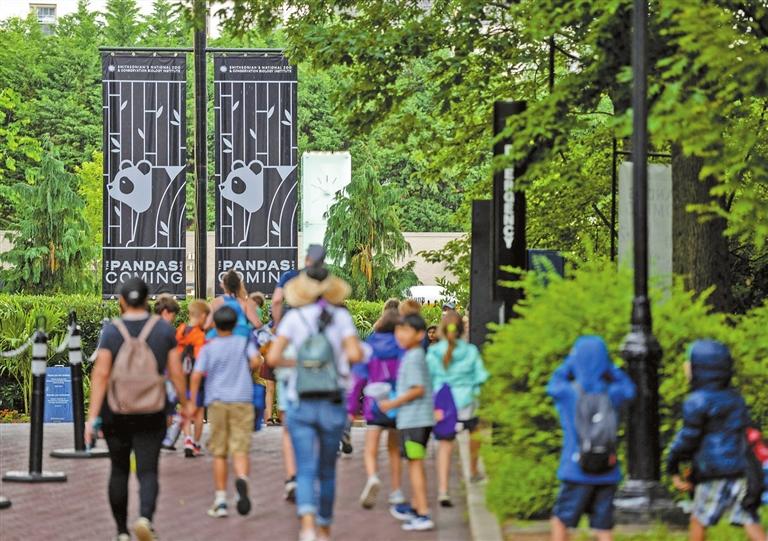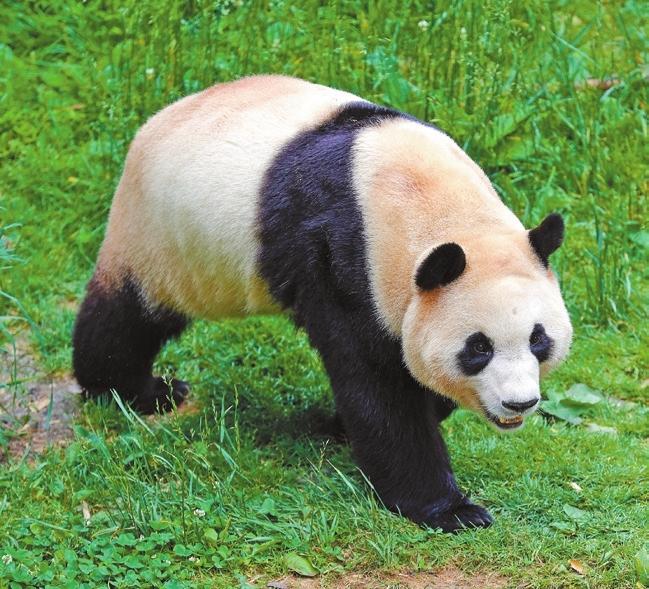

TWO new giant pandas will be arriving at the Smithsonian’s National Zoo in Washington, D.C., this year, the zoo announced Wednesday. The bears, named Qing Bao and Bao Li, a pair of 2-year-old black-and-white animals, will arrive by the end of 2024 through a partnership with the China Wildlife Conservation Association, the zoo said. Bao Li currently lives at the Shenshuping Base in Wolong. Qing Bao lives at Dujiangyan Base in Sichuan. FedEx will provide a dedicated flight and ground transportation for the bears and their animal care team from China to the Zoo. In a video announcement featuring U.S. first lady Jill Biden planning a “black tie,” vegetarian dinner for the iconic bears, the zoo broke the news. “I’m so proud to say that this long-standing program and this collaboration with our Chinese colleagues is one of the reasons why giant pandas are no longer listed as endangered, but rather only vulnerable on the global list of species at risk of extinction,” Brandie Smith, director of the zoo’s Conservation Biology Institute, told reporters Wednesday. The institute is seeking US$25 million in public and corporate donations to support the pandas over the next 10 years. Chinese ambassador to the United States Xie Feng also celebrated the news. He said China’s success in conserving giant pandas is inseparable from international cooperation, including with the United States, which is among the first countries to work with China in saving the once-endangered species. Over the decades, the globally adored species has grown to nearly 1,900 in the wild in China. “China and the United States should choose to be partners, not rivals,” Xie said. “Panda huggers should not be stigmatized. If there should be any protectionism, then let us protect biodiversity; protect the only home for the entire humanity; protect stable, sound and sustainable China-U.S. relations and protect a better future for the younger generations.” Bao Li has ties to Washington: His mother, Bao Bao, was born at the zoo in 2013 and his grandparents, Tian Tian and Mei Xiang, left an unbearable panda-shaped hole in D.C. residents’ hearts last year when they bid farewell to the zoo. The pair first arrived at the zoo in December 2000. Last year, the Smithsonian’s three giant pandas — Tian Tian, Mei Xiang and their youngest cub, Xiao Qi Ji — departed the National Zoo; at the time, Smithsonian staff called the departure a “hiatus.” Melissa Songer, a conservation ecologist at the zoo, was among a team who traveled to China a couple of weeks ago and selected the two pandas for the zoo. Songer said that the “emotional connection” the zoo’s staff felt about Bao Li is a significant thing to consider for his selection. It means a lot for both the zoo and the city “that we have a family member coming back,” she said, alluding to his mom and grandparents. Bao Li and Qing Bao — both beautiful and healthy in China now — are also “genetically distant,” making them a good pair as future parents, Songer said. Songer said having new panda cubs from the pair is definitely one of the plans for their stay at the zoo. Stephanie Brinley, the zoo’s deputy director, said their panda house is being renovated to give Bao Li and Qing Bao the “best-in-class” care, “so that when they show up here, they have a wonderful place to call home and be very happy pandas.” Zoo Atlanta’s four iconic pandas will depart for China later this year, when the zoo’s agreement with China expires. Their journey follows the departure of pandas from the San Diego and Memphis zoos. But more pandas are set to arrive in other parts of the United States. In April, it was announced China would send giant pandas to San Francisco’s zoo for the first time, and the San Diego Zoo announced in February it would welcome two new black-and-white residents. The first pair of giant pandas ever in the United States, Ling Ling and Hsing Hsing, arrived at the Washington National Zoo in April 1972 as a gift from the Chinese Government, a few months after then-President Richard Nixon’s ice-breaking visit to China. Meanwhile, Fu Bao, the first giant panda born in the Republic of Korea who returned to China in early April, is expected to meet the public at the Shenshuping Base in Wolong in June. (SD-Agencies) | 
